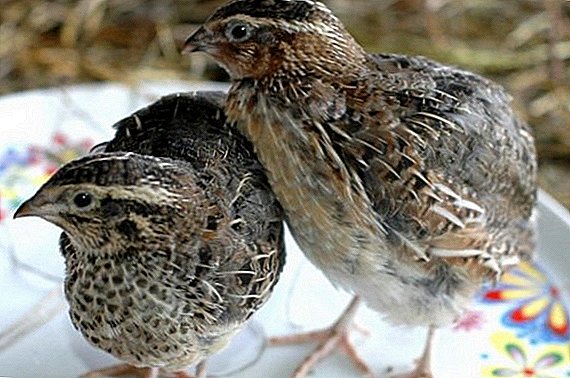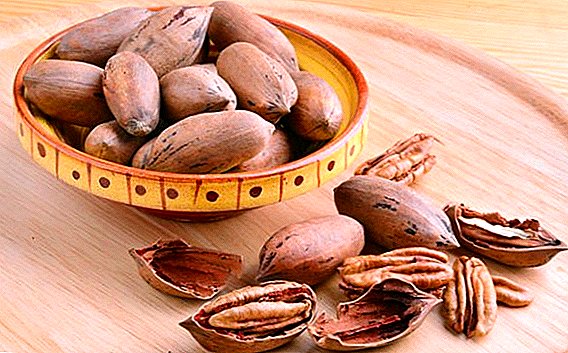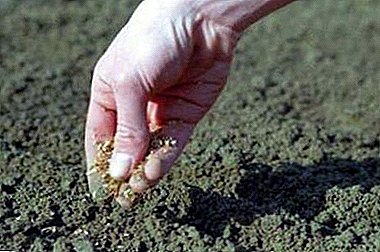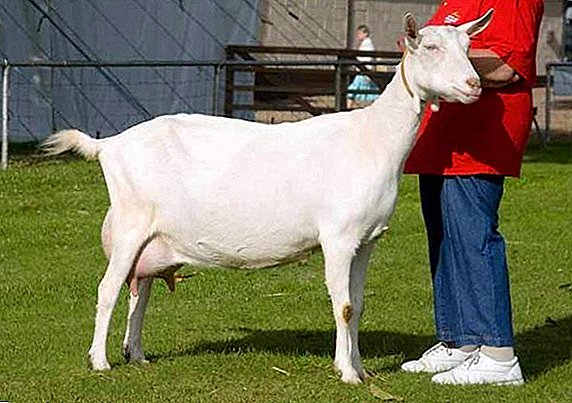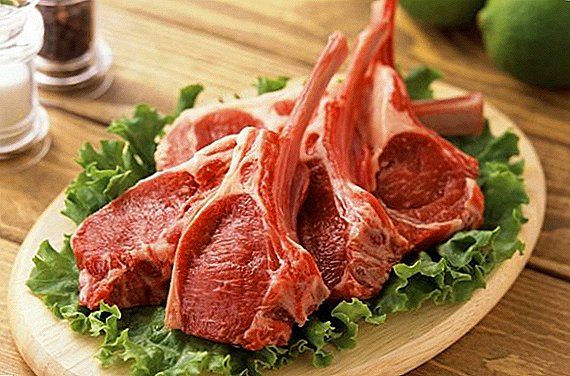 Meat plays an important role in many dishes, a large number of countries and peoples are famous for one or another recipe for preparing a certain type of this product. In our article we will talk about lamb, which is often a key ingredient in Oriental dishes, but recently it has become popular in our latitudes, replacing our usual beef, pork and chicken. We learn what it is useful for, whether there are any restrictions on use, how to choose and prepare it, in the article.
Meat plays an important role in many dishes, a large number of countries and peoples are famous for one or another recipe for preparing a certain type of this product. In our article we will talk about lamb, which is often a key ingredient in Oriental dishes, but recently it has become popular in our latitudes, replacing our usual beef, pork and chicken. We learn what it is useful for, whether there are any restrictions on use, how to choose and prepare it, in the article.
Calorie and chemical composition
Lamb is considered dietary: its caloric value is 209 kcal per 100 g, in which proteins are 15.6 g, fat is 16.3, carbohydrates are 0 g, water is 59.47 g and ash is 0.87 g. Mutton also has rich vitamin and mineral composition.
Vitamins:
- B1 - 0.11 mg;
- B2 - 0.21 mg;
- B3, or PP - 5.96 mg;
- B5 - 0.65 mg;
- B6 - 0.13 mg;
- B9 (folic acid) - 18 µg;
- B12 - 2.31 mcg;
- E - 0.2 mg;
- B4 (choline) - 69.3 mg;
- D - 0.1 µg;
- K - 3.6 mcg.
- potassium - 222 mg;
- calcium - 16 mg;
- magnesium - 21 mg;
- sodium, 59 mg;
- phosphorus - 157 mg.
- iron - 1.55 mg;
- manganese - 19 mcg;
- copper - 101 micrograms;
- zinc - 3.41 mg;
- selenium - 18.8 mcg.

Did you know? Eating 100 grams of mutton per day, you will satisfy the daily need for protein by 20%, and in fat - by 10%.
Taste qualities
The taste of lamb meat will depend not only on the method of its preparation, but also on the age of the sheep. Lamb meat up to one year is the most tender, there is practically no fat in it, adult sheep meat is already fatter, but it has a richer taste, but the meat of old sheep is not eaten so often as it becomes rough, tough, very fat and due to this, it acquires a peculiar taste that will be difficult to hide.
What is useful for lamb organism
Lamb has a balanced composition that is beneficial for the human body.
Find out what breeds of sheep are bred for meat.
The beneficial properties of this meat include:
- Improving well-being. B vitamins improve metabolism and increase the resistance of the immune system. Also contained in lamb meat vitamins K, E and D strengthen the circulatory system and musculoskeletal system.
- Normalization of the nervous system. The same group B vitamins improve the work of the central nervous system and reduce the risk of nervous disorders.
- Cold protection. In this case, it is useful not so much the meat itself, but its fat, which is used as part of traditional remedies for the treatment of bronchitis and sore throat.
- Suitable for those who diets. Lamb meat has a reduced fat content, when compared with other types of red meat, and fat itself does not contain much cholesterol. That is why lamb is included in the diet for people with overweight and diabetes.
- Hinders the development of caries. This property of lamb acquired due to the content of fluoride in it, which improves the condition of the teeth and fights manifestations of caries. Also in this meat contains calcium, which strengthens tooth enamel.
- Normalization of the digestive tract. The work of the pancreas and the entire gastrointestinal tract as a whole will improve due to the content of lecithin in mutton. When hypoacid gastritis is often prescribed to drink the broth of lamb.
- Increased hemoglobin level. In the prevention of anemia, it is often recommended to use lamb meat, which contains a lot of iron, which will subsequently increase hemoglobin levels.

Can i eat
No matter how useful any product is, there will always be some nuances in which its use can be harmful. Therefore, we consider in which cases it is possible to eat mutton, and in which it is impossible.
During pregnancy
Lamb will be useful for pregnant women primarily because it contains a fairly large amount of folic acid, which is responsible for the development of nerve cells in the embryo. Folic acid is often prescribed to pregnant women additionally because of its lack, so the benefits of lamb are obvious.
This meat also contains zinc, which forms a healthy immune system and is responsible for cell division and fetal growth, vitamin B12, supports the immune system of the fetus and forms red blood cells, trace elements copper and manganese, promotes normal growth of the fetus, and so on. But in all good measure: a high content of saturated fat will have a negative impact on lipid levels, and a high level of sodium can lead to an increase in blood pressure. 
Important! You should not exclude the appearance of allergies, so before eating mutton should always consult with your doctor.
Breastfeeding
Due to the fact that lamb is still quite fat, it is often recommended to completely remove from the diet during breastfeeding. However, this meat contains many beneficial vitamins and microelements that are important not only for the newborn, but also for the mother herself, so that the recovery process after childbirth goes more smoothly and quickly. Therefore, many doctors have revised their views and do not prohibit the use of lamb in food with HB, but only at the right time and in moderation.
First of all, eat lamb meat only after four months from the birth of the baby. You need to start with the broth and, if the child has no negative reaction, you can slowly enter into the diet a little meat, gradually increasing the amount to 150 grams per day, no more. When consulting with a doctor and observing all his advice, the appearance of negative consequences from the use of mutton is reduced to a minimum. 
When losing weight
When losing weight, lamb does not hurt at all, just the opposite. As we have already mentioned, this meat contains less fat than other types of red meat, and this is one of the main factors important for weight loss. In addition, the cholesterol content in this meat is minimal, and this means that all the fat that is in it, will go to the release of energy and will not lead to weight gain. But, of course, do not forget that all these properties will not be beneficial if you do not comply with the measure. Enough one small piece of meat per day, and you replenish the body with useful vitamins and elements, while not violating its main goal - losing weight.
Gout
Equally important for the disease of gout is dieting, which excludes foods rich in purines. These include meat products as well, so lamb should be used for gout with great care. But since this type of meat is less fat, it is usually allowed to eat mutton boiled 2-3 times a week. 
Important! Do not forget that there are different degrees of the disease and individual characteristics, so you should always consult with your doctor about the inclusion of mutton in the list of approved products for gout.
With diabetes
Lamb will not harm a person with diabetes if you choose the right meat and know how to cook it. It should be lean, that is, from a young lamb. If there is a layer of fat, they must be cut off. Permissible cooking methods are stewing, baking and boiling. Frying on fire or in a frying pan is unacceptable, as this method increases the amount of fat, which is absolutely not suitable for people with diabetes.
With gastric ulcer, pancreatitis, gastritis
With these diseases, especially in the stages of exacerbation, it is absolutely impossible to use lamb. If we are talking about the remission stage, sometimes doctors allow to eat a little lamb, after informing the patient that you can choose only lean meats and cook them only by cooking, stewing or baking.
When can I give a child
 Opinions about when you can enter into the diet of the child lamb, diverge. Some people start to introduce this meat when the baby is one year old, while others wait until it reaches 2-3 years old. In fact, there is no universal advice, because each child is individual. If there, where you live, mutton is eaten often, then most likely the baby will normally perceive lamb and in a year. But if you yourself rarely eat this meat, the child has an upset stomach or an allergy, then it is better to postpone the lamb to two years, and even better to three.
Opinions about when you can enter into the diet of the child lamb, diverge. Some people start to introduce this meat when the baby is one year old, while others wait until it reaches 2-3 years old. In fact, there is no universal advice, because each child is individual. If there, where you live, mutton is eaten often, then most likely the baby will normally perceive lamb and in a year. But if you yourself rarely eat this meat, the child has an upset stomach or an allergy, then it is better to postpone the lamb to two years, and even better to three.
And of course, when you decide to put lamb in the diet of your baby, you should start gradually and first give no more than half a teaspoon of lamb puree. If there is no negative reaction, you can gradually increase the amount to one teaspoon, and so on. It is also not necessary to feed the child with this meat every day - even if he took it well, one or two times a week would be quite enough.
Cooking Application
Now that you know the benefits of lamb, it's time to learn how to cook it tasty.
What is cooked in different countries of the world?
 It is believed that lamb is popular only in the East, but it is mistaken. Dishes where this meat is in composition are popular in Asian, Arab, Balkan countries, in the north of Africa. Deliciously cooked lamb you can also find in France and the UK.
It is believed that lamb is popular only in the East, but it is mistaken. Dishes where this meat is in composition are popular in Asian, Arab, Balkan countries, in the north of Africa. Deliciously cooked lamb you can also find in France and the UK.
So, in India, they love to cook lamb in Indian, or Rogan Josh. In addition to meat, various spices are used: a mixture of Garam Masala, curry, turmeric, paprika. The cooking process includes stewing together with spices with the addition of vegetable oil and natural yogurt.
In Pakistan, a popular dish called Nargisi Koftai. It uses minced lamb and dry spices: cutlets are made, in the middle of which a boiled egg is placed, and fried in butter.
In Azerbaijan, such meat is stewed with dried apricots, in Kazakhstan - with potatoes and onions. And of course, in this description one cannot do without a traditional Caucasian shashlik from lamb or Uzbek pilaf, where this type of meat is also used.  In Morocco, in northern Africa, lamb is cooked as follows: first, the meat is marinated with spices and olive oil for 8-10 hours in the cold. Then it is fried in a pan with the addition of butter, onion, carrot, ginger, garlic, tomato paste and honey. The dish is called tajin.
In Morocco, in northern Africa, lamb is cooked as follows: first, the meat is marinated with spices and olive oil for 8-10 hours in the cold. Then it is fried in a pan with the addition of butter, onion, carrot, ginger, garlic, tomato paste and honey. The dish is called tajin.
The favorite meat parts of the Greeks are the leg of lamb and shoulder blade. The leg is often baked directly whole or stewed, but from a spatula they can make a roll or stuff it with eggplants.
In France, you will certainly be treated to Breton lamb, where, in addition to the meat itself, there will be a lot of beans. And picky gourmets will love the rack of lamb with mustard sauce and white wine.
If fate brought you to England, we recommend trying lamb on the bone (Lamb on the Bone). This dish is not cooked quickly: the leg of lamb is roasted in the oven on very low heat for 5 hours.
Did you know? Prince Charles of Wales is a great lover of lamb. For this reason, it contains its own farm, which produces the most environmentally friendly mutton in the world.
Nearby, in Scotland, you will be offered the famous Scottish haggis. It is made from lamb by-products that are cooked with spices in the lamb stomach.  Scottish Haggis The national dish of Irish cuisine is considered to be Irish stew. Lamb with onions and potatoes is stewed in deep dishes for at least an hour with the addition of water, sometimes beer. Be sure to add cumin and parsley.
Scottish Haggis The national dish of Irish cuisine is considered to be Irish stew. Lamb with onions and potatoes is stewed in deep dishes for at least an hour with the addition of water, sometimes beer. Be sure to add cumin and parsley.
What is combined
A variety of dishes made from lamb, can cause a slight panic among novice chefs. Therefore, in order to succeed, you need to clearly understand what spices are most combined with this sort of meat and what is best served.
Of course, the list of seasonings for lamb meat can vary depending on the dish, on the preferences of the chef and national characteristics. But traditionally it is believed that such seasonings and spices are best suited for this type:
- salt;
- parsley;
- Bay leaf;
- garlic;
- different types of peppers;
- paprika.

Also, some connoisseurs of taste add dry herbs to mutton: cumin, mustard seeds, oregano, thyme, saffron.
Originality of taste will be given by freshly squeezed lemon juice. You can also take chopped greens (to taste), add spices, ready mustard, finely chopped garlic and smear the meat before carrying on the table.
If you are preparing a version of the fried dish, then it can be served with various sauces. In this case, rely on your taste or try to experiment. But the best side dishes for lamb are a variety of vegetables, rice and greens. From vegetables that need to be pre-cooked or baked, suitable potatoes, carrots, eggplant. Greens are best used parsley or cilantro: it must be finely chopped and mixed with chopped nuts (walnuts or hazelnuts). And if you decide to serve rice, then boil it in water with spices, such as turmeric.
VIDEO: PARKS AND THEIR PURPOSE
Cooking secrets
- If you plan to cook pilaf or stew, choose a spatula or brisket, if you fry or bake, the back and kidney parts, and the neck is very good for cooking and meatballs.
- Before cooking, remove all films, as they are inedible. If there is a lot of fat on the piece, then the extra should be removed, leaving quite a bit to give juiciness.
- If you have frozen lamb, then let it melt naturally, without speeding up the process.
- You can not keep meat on the open fire for a long time - it will turn out very dry.
- Cooking time should not be large, otherwise the lamb will be tough.
- Marinate the meat pieces before cooking, if the recipe permits. The minimum time is about an hour, and the optimum is 10-12 hours.
- If you fry pieces of lamb meat, then put them on the pan fat down to make it juicier.
- Finished hot dish should be served as soon as possible, as the fat quickly hardens, and this spoils the taste.
VIDEO: HOW TO PREPARE THE MUTTON WITHOUT SMELL
How to choose the lamb when buying
When choosing a lamb, follow these tips:
- Look at the appearance - the structure of fresh meat is coarse-grained, and the color depending on age can be from pink to dark red. Better to choose lighter.
- Check for smell - it should be fresh and pleasant. You can ask the seller to cut off a small piece of meat with fat - set it on fire. If after that you feel an unpleasant smell, it is better to continue the search for a quality product.
- Pay attention to the fat - in a young lamb it is white and elastic. And if the fat is yellow, loose and smells bad, then this is the meat of an old animal, it is better not to take this.
- We recommend checking the meat by clicking on it with your finger. If the dent disappears completely after a few minutes, the meat is the freshest. If the fingerprint remains, but there is no blood in it, then the meat is quite suitable, just it has already been subjected to freezing. But if blood fluid accumulates in the pit, it means that the meat has been frozen and thawed more than once, and this will affect the taste.
VIDEO: HOW TO CHOOSE A GOOD LAMB
How to store at home
It is very important to properly store purchased meat products. So, if the pieces of lamb are fresh, then they can be put simply in the refrigerator, where the temperature will be approximately + 5 ° C, but cooked for two days. If you are planning a dish that requires pre-marinating, then in the marinade the meat will stay in the fridge for a week. Fresh product can also be frozen immediately, just pre-cut it into pieces and pack in airtight bags. It can be stored in the freezer for 6 months at a temperature not higher than -12 ° С.
How can harm
Lamb dishes should be used with caution when:
- diseases of the kidneys, liver, gallbladder;
- stomach ulcers and acidity;
- hypertension.
 Lamb is a very interesting product that should be consumed, especially as recipes of dishes, where it is the main ingredient, are just a huge amount. You will find them in the cuisines of different countries and choose the ones that you like. The main thing - know the measure and do not overeat. Good luck to you culinary experiments and enjoy your meal!
Lamb is a very interesting product that should be consumed, especially as recipes of dishes, where it is the main ingredient, are just a huge amount. You will find them in the cuisines of different countries and choose the ones that you like. The main thing - know the measure and do not overeat. Good luck to you culinary experiments and enjoy your meal!


